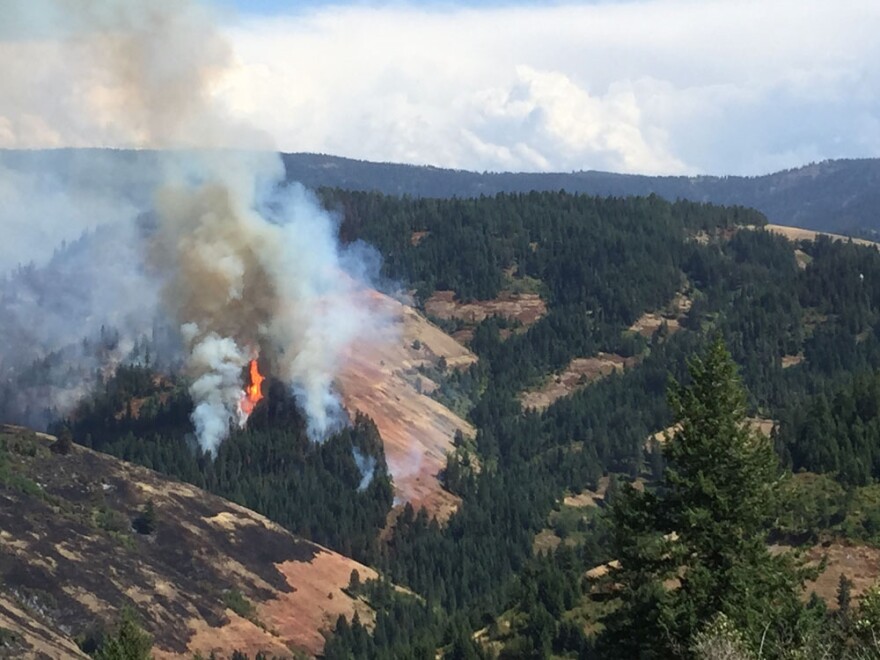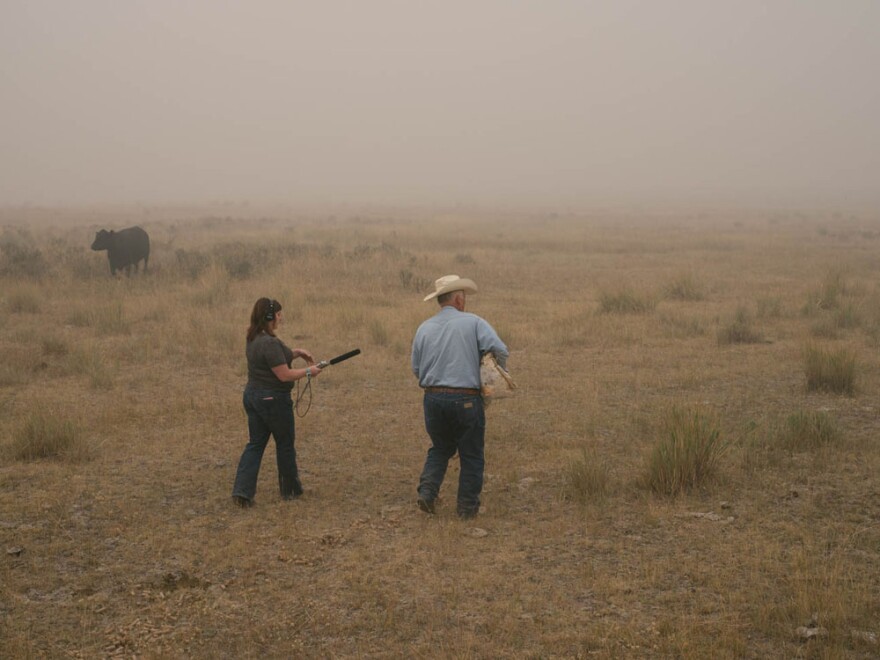Editor’s note: Anna King’s reports from the 2015 wildfires in Washington state earned national recognition in breaking news and crisis journalism. We asked our Richland correspondent to reflect on fire, safety, and what’s changed over the years. --Phyllis Fletcher
Last year I saw a lot of fire.
Fire in Walla Walla.
Fire in Chelan.
Fire in Twisp and Omak.
I’ve covered fires for more than a decade. The wildfires I’ve been seeing recently appear increasingly larger and more unpredictable, and draft more manpower than the ones I recall from early in my career. Several dry and drought years haven’t helped.

Last year as I took photos and conducted interviews in downtown Chelan I felt relatively safe even with ash falling on my shoulders like snow. In the smoky haze near Twisp and Omak, I had some scary moments up mountain roads with no chainsaw or shovel, and no clear way out, that made me question my safety. I decided to get a reality check this year and learn more.
Myth #1: If you stay in the black you're fine.
Firefighters say: Not always!
When a fire rolls through a landscape it can burn things down to the nubs, leave trees standing or miss whole patches of forest or desert landscape. Keeping to “the black,” I found out, is better than being in front of a fire -- but it won’t always be safe.
Tod Kreutz, a battalion chief with the City of Kennewick, said there’s something called a “dirty burn” where some of the shrubs and trees are burned over -- but the fire misses other parts of the fuel. And it can come back through again.
Another problem firefighters encounter is that stumps can burn and smolder underground for weeks or months after a fire has passed through.
“You may think you are just walking on burned out black land but you can actually step in a stump hole,” Kreutz said. “We have firefighters who step in hot stump holes and get burns up to their knees.”

Also snags are a problem. Kreutz said a snag is a tree that has burned, but is still standing and can fall at any moment.
“Having witnessed that before, there is no warning,” Kreutz said. “It’s not like you hear this creaking sound and you look up, you’re walking by and all of a sudden, boom, there’s a tree on the ground.”
Sometimes it can crack halfway up and drop without warning. On my folks’ ranch we used to call those “widowmakers.”
So, being in the black is no guarantee of safety.
Myth #2: If you're in the city on cement with firefighters you're safe.
Firefighters say: Nope
When I saw Costco-sized fruit warehouses go down, surrounded by concrete and made of concrete and steel, it messed with my brain on where wildfires go and how they behave.

In Canada, Brad Grainger, Deputy Chief of Operations for Wood Buffalo, said he never planned to be on the front edge of the worst natural disaster his country has ever seen. But in Fort McMurray, Alberta more than 2,000 homes were destroyed in his community by a wildfire so large and powerful it created its own weather. He acted as the chief of operations for the emergency operation center during the fire. He said even trees that normally don’t burn, burned this year.
“This fire behaved very differently than they usually do,” Grainger said.
He also compares his area to Northwest cities like Seattle, Portland, Boise and Spokane. All those cities also have a growing fringy edge of residential and commercial property that intermix with timbered rural areas or fuel-loaded sagelands.
Grainger said his community has now logged and cleared a 100-foot-wide swath around its entire urban area to help stop future wildfires. City managers in Fort McMurray are also rethinking the way they manage vegetation in their urban parks; they are thinning some growth and removing downed and dead timber.
In Washington last year, near Chelan and Wenatchee, I saw where embers had floated across the Columbia River carrying the fast moving fire with it. It burned through irrigated fruit orchards, baking apples right on the tree.

As more people in the Northwest are building into remote areas, fire managers say we create a larger fringe of development meeting wilderness -- and the firefighting jurisdictions get fuzzy.
Grainger said city firefighters know how buildings behave, and wildland firefighters know how wildlands behave -- but these new fires behave differently than what we’ve seen before. And on the cusp of urban-meets-rural things can get messy, especially when a fire is growing rapidly or is being pushed by thunderstorms or its own weather.
In Canada, Grainger said it wouldn’t have mattered how many helicopters, retardant-laden planes and engines had been put on the fire that took down a large swath of his community.
“This fire was moving so fast, even when we had all the resources within 24 hours, we were still unable to stamp it back,” he said. “We lessened what it did; that’s it.”
Myth #3: If you lose your escape route you can call 911.
Firefighters say: Not necessarily.
Working near active fires is hectic. There’s a lot going on, tracking the fire is confusing and early fire maps are often sketchy.
Kreutz, the Kennewick battalion chief, told me that listening to radio scanners doesn’t really help civilians as the information might be coded or too fast-changing for dissemination to the public. Also, maps might not show all the forest roads and remote farming roads one could encounter on the landscape.
“If you don’t know the area, you’re going down a gravel road and you can see the fire out in front of you,” Kreutz said, “do you really know your escape route? Do you know where the fire really is? A lot of times firefighters are setting additional fires to back-burn.”
Some roads are dead ends or unsigned in the hills. And -- as I know well -- there’s often no service on your cell phone.

Best bet? Watch official firefighting channels on social media, and look for emergency management alerts to know where to go and what to do. If, like me, your job takes you close to the action, stick with firefighters or locals who know the terrain. Know your way out--or several ways out.
Further, Kreutz said firefighters can’t find and save you if there’s too much smoke, or if you don’t know where you are.
Also, in the case of the fire this year in Canada fire, 911 might be overwhelmed with callers.
When I saw the Taylor Bridge fire near Cle Elum in 2012, I thought that was a big one. Then, when we had the Carlton Complex near Twisp in 2014, again we journalists thought we had seen something unusual. Last year on the fires in Walla Walla, Twisp and Omak -- I started to realize ...

… for the foreseeable future maybe fires in the West are just going to be bigger and badder. Canadians call what hit Fort McMurray “The Beast.”
As we encounter a new type of wildfire that burns between wilderness and population centers we need to learn quickly, stay safe and prepare as much as we can.
Anna King tweets from @AnnaKingN3


